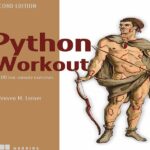- عنوان کتاب: Quantum Computing Models for Cybersecurity and Wireless Communications
- نویسنده: Budati Anil Kumar
- حوزه: محاسبات کوانتومی
- سال انتشار: 2025
- تعداد صفحه: 362
- زبان اصلی: انگلیسی
- نوع فایل: pdf
- حجم فایل: 5.12 مگابایت
هوش مصنوعی، امنیت سایبری و رمزنگاری عملی تنها تعدادی از حوزههایی هستند که یادگیری ماشین کوانتومی بیشترین پتانسیل را دارد. از آنجایی که اتکای فزاینده ما به اینترنت، ما را در معرض تهدیدات ناشی از حملات سایبری قرار می دهد، به تکنیک های پیشرفته رمزگذاری داده ها نیاز فوری دارند. اگرچه بسیاری از استانداردهای رمزگذاری فعلی ممکن است توسط ماشینهای مبتنی بر کوانتومی قابل شکستن نباشند، مهم است که از تهدیدات قریبالوقوع جلوتر باشیم و با استفاده از راهحلهای ضد کوانتومی برای حملات سایبری پیچیده آماده شویم. مسائل دشواری که کامپیوترهای کلاسیک قادر به حل آن نیستند، مانند تکنیک های به کار رفته در رمزگذاری داده ها، توسط کامپیوترهای کوانتومی قابل حل است. تکنیکهای رمزگذاری مدرن مبتنی بر فرمولهای ریاضی هستند که رمزگشایی برای رایانههای سنتی غیرعملی دشوار است. تلاش خستگیناپذیر برای ایجاد تکنیکهای رمزگذاری امن کوانتومی، هدف تحقیق است. یکی از روش های ممکن، انتقال ایمن یک کلید کوانتومی بین دو نقطه پایانی است که از کیفیت های فیزیک کوانتومی معروف به توزیع کلید کوانتومی (QKD) استفاده می کند. قبل از پیشرفت های اخیر، این تکنیک تنها با اتصالات فیبر نوری قابل استفاده بود، اما اکنون انتقال کلید کوانتومی از طریق اینترنت نیز امکان پذیر است. اگرچه هنوز بسیاری از مشکلات حل نشده در مورد محاسبات کوانتومی وجود دارد، بدیهی است که روش های فعلی امنیت سایبری و رمزگذاری در خطر هستند. ما باید روشی را که از دادههای خود محافظت میکنیم تطبیق دهیم و استراتژی دفاعی فشردهای را اتخاذ کنیم که با لایههای امنیتی کوانتومی متعدد مشخص میشود تا تهدید را کاهش دهیم. برای محافظت از خود در برابر تهدیدات کوانتومی بالقوه، سازمان های آگاه به امنیت به طور فعال به دنبال راه حل های رمزگذاری آماده کوانتومی، از جمله راه حل های ارائه شده توسط Quantum Exchange هستند. ماشین های کوانتومی آینده به طور تصاعدی قدرت محاسباتی را افزایش خواهند داد و فرصت های جدیدی برای بهبود امنیت سایبری ایجاد خواهند کرد. حملات سایبری کلاسیک و کوانتومی را می توان به طور فعال شناسایی کرد و قبل از اینکه به آنها آسیب برساند توسط امنیت سایبری مبتنی بر کوانتومی متوقف شد. مسائل پیچیده مبتنی بر ریاضی که چندین استاندارد رمزگذاری را پشتیبانی می کنند را می توان با استفاده از یادگیری ماشین کوانتومی به سرعت حل کرد. استانداردهای رمزنگاری سنتی در رایانههای کلاسیک، که بر محاسبات دشوار ریاضی مانند فاکتورسازی اول تکیه میکنند، هزاران سال یا بیشتر طول میکشد. با این حال، این مسائل ممکن است توسط ماشینهای کوانتومی در مدت زمان قابل مدیریت حل شوند. با وجود فقدان دستگاههای کوانتومی تجاری گسترده، عاقلانه است که برای مشکلات امنیت سایبری مبتنی بر کوانتومی برنامهریزی کنیم و با محدودیتهای موجود مقابله کنیم. امنیت و حریم خصوصی سازمان های تجاری در نتیجه این آمادگی بسیار افزایش می یابد. به عنوان مثال، دشمنان امروزی می توانند به شبکه های خصوصی نفوذ کنند. هنگامی که ماشین های کوانتومی در مقیاس بزرگ در آینده به صورت تجاری در دسترس قرار می گیرند، این ظرفیت محاسباتی عظیم می تواند برای تضعیف شبکه ها و زیرساخت ها با رمزگشایی داده های حیاتی مورد استفاده قرار گیرد. امنیت سایبری مبتنی بر یادگیری ماشین کوانتومی، بهویژه در زمینه محاسبات کوانتومی و ویژگیهای آشوب کوانتومی، شانس قویتر و هیجانانگیزی را برای محافظت از اطلاعات مهم و حساس با پیشی گرفتن از این حملات احتمالی ارائه میکند. از طریق فصلهای کتاب، دانشگاهیان، محققان و دانشمندان ایدهها، مفاهیم و موارد استفاده خود را در مورد فناوریهای پیشرفته مانند بلاک چین، یادگیری ماشین کوانتومی، امنیت سایبری، اینترنت اشیا و SDN ارائه کردهاند. هدف اصلی این کتاب انتشار آخرین مقالات تحقیقاتی با تمرکز بر مشکلات و چالشهای حوزه فناوری انتقال داده، الگوریتمهای کامپیوتری، دستگاههای مبتنی بر هوش مصنوعی (AI)، فناوری رایانه و راهحلهای آنها برای ایجاد انگیزه در پژوهشگران است. این کتاب به عنوان یک مرجع آماده برای محققان و متخصصانی است که در زمینه مدلهای محاسبات کوانتومی در ارتباطات، تکنیکهای یادگیری ماشین، صنعت مراقبتهای بهداشتی و فناوریهای مجهز به اینترنت اشیا کار میکنند.
Artificial intelligence, cybersecurity, and practical cryptography are just a few of the areas where quantum machine learning has the most potential. Advanced data encryption techniques are urgently needed as our growing reliance on the internet exposes us to threats brought on by cyber-attacks. Although many current encryption standards may not be breakable by current quantum-based machines, it is vital to keep ahead of the impending threats and prepare for sophisticated cyberattacks using quantum-proof solutions. The difficult issues that classical computers are unable to address, such as the techniques employed in data encryption, can be solved by quantum computers. Modern encryption techniques are based on mathematical formulas that would be impractically difficult for traditional computers to decrypt. Working tirelessly to create quantum-secure encryption techniques is the research goal. One possible method is for securely transferring a quantum key between two endpoints that makes use of the quantum physics qualities known as quantum key distribution (QKD). Before recent developments, this technique could only be used with fiber optic connections, but now quantum key transfer is also possible over the Internet. Although there are still many unsolved problems concerning quantum computing, it is evident that present methods of cybersecurity and encryption are at risk. We need to adapt the way we safeguard our data and take a defense-intensive strategy characterized by many layers of quantum-secure security to lessen the threat. To protect themselves from potential quantum threats, security-conscious organizations are actively looking for quantum-ready encryption solutions, including those provided by Quantum Exchange. Future quantum machines will exponentially boost computing power, creating new opportunities for improving cybersecurity. Both classical and quantum-based cyberattacks can be proactively identified and stopped by quantum-based cybersecurity before they harm. Complex math-based problems that support several encryption standards could be quickly solved using quantum machine learning. The traditional cryptography standards on classical computers, which rely on difficult mathematical calculations like prime factorization, would take millennia or more. However, these issues might be resolved by quantum machines in a manageable amount of time. Despite the lack of widespread commercial quantum devices, it is wise to plan for quantum-based cybersecurity difficulties and deal with present restrictions. The security and privacy of commercial organizations will greatly increase as a result of this preparation. For instance, today’s adversaries could penetrate private networks. When large-scale quantum machines are made commercially available in the future, this enormous computational capacity could be used to undermine networks and infrastructures by decrypting critical data. Quantum machine learning-based cybersecurity, especially in the context of quantum computing and quantum chaotic characteristics, presents stronger and more exciting chances for protecting important and sensitive information by outpacing these possible attacks. Through book chapters, academics, researchers, and scientists have contributed their ideas, concepts, and use cases on cutting- edge technologies like blockchain, quantum machine learning, cybersecurity, IoT, and SDN. The main purpose of this book is to publish the latest research papers focusing on problems and challenges in the areas of data transmission technology, computer algorithms, artificial intelligence (AI) based devices, computer technology, and their solutions to motivate researchers. This book serves as a ready reference for researchers and professionals working in the area of quantum computing models in communications, machine learning techniques, the healthcare industry, and IoT-enabled technologies.
این کتاب را میتوانید از لینک زیر بصورت رایگان دانلود کنید:
Download: Quantum Computing Models for Cybersecurity and Wireless Communications




































نظرات کاربران